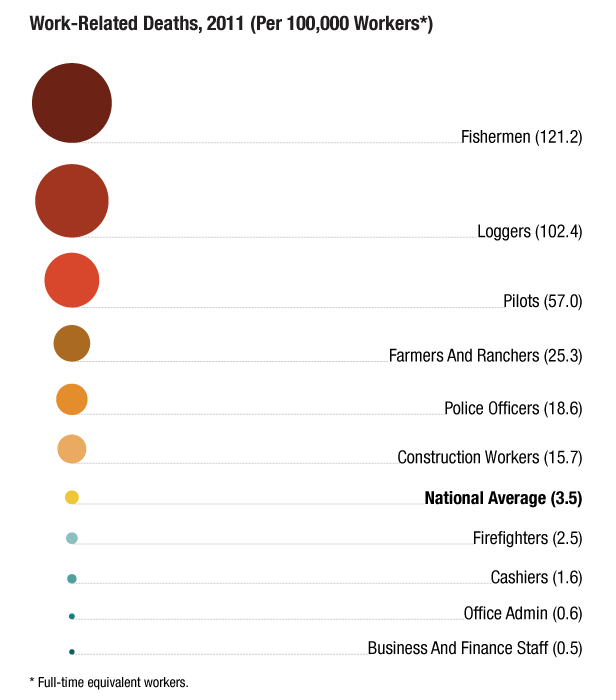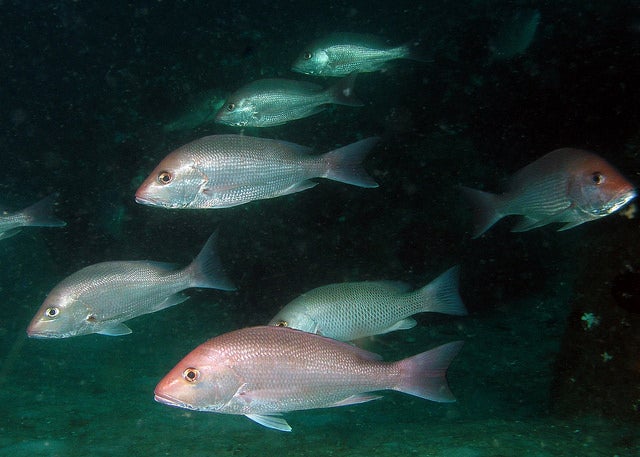Department of Labor Finds Fishing is (once again) the Deadliest Job
The U.S. Department of Labor released its final statistics on job fatalities in 2011 today. Fishing was once again the deadliest occupation, with a fatality rate 36 times that of the national average. Fishing is consistently the most dangerous American occupation, year after year, which is surprising to many people who do not fish or are not close to the industry.
NPR produced this compelling visual based on the last numbers the Department of Labor released in 2012 on job fatalities:

Credit: Jess Jiang and Lam Thuy Vo /NPR
There are many factors that impact fishing safety including the rules that are put into place to address overfishing. The National Marine Fisheries Service (NMFS) is in the process of revising the fishing safety provision in the Magnuson Stevens Act. It’s important that the provision be strengthened so that new rules to make fisheries sustainable do not compromise safety. Unintended consequences may sometimes result from some approaches to control fishing, such as imposing very short fishing seasons, limiting crew size, or the length of vessels.
One way to improve fishing safety is by choosing fishery management plans that do not result in fishing derbies–or a ‘race to fish’—where safety is compromised by an economic incentive to race against other fishermen and the clock to catch as many fish as possible, even in stormy weather. Catch shares are proven to keep fishing within limits and also can also positively impact safety in multiple ways, such as by reducing the pressure to fish in bad weather because fishermen have more freedom over when to fish in a catch share. Catch shares are not an ideal solution for every fishery, but they should be kept in the toolbox of options for fishery Councils—especially if they can potentially help decrease the risk for fishermen.
Making fishing a significantly less deadly profession is going to take a variety of measures. It’s no small task because fishing is inherently dangerous, but it shouldn’t be any more dangerous than it has to be. It’s time for fishing safety advocates, fishermen and conservationists to stand together to ensure safety is being considered in the formation of management plans.












